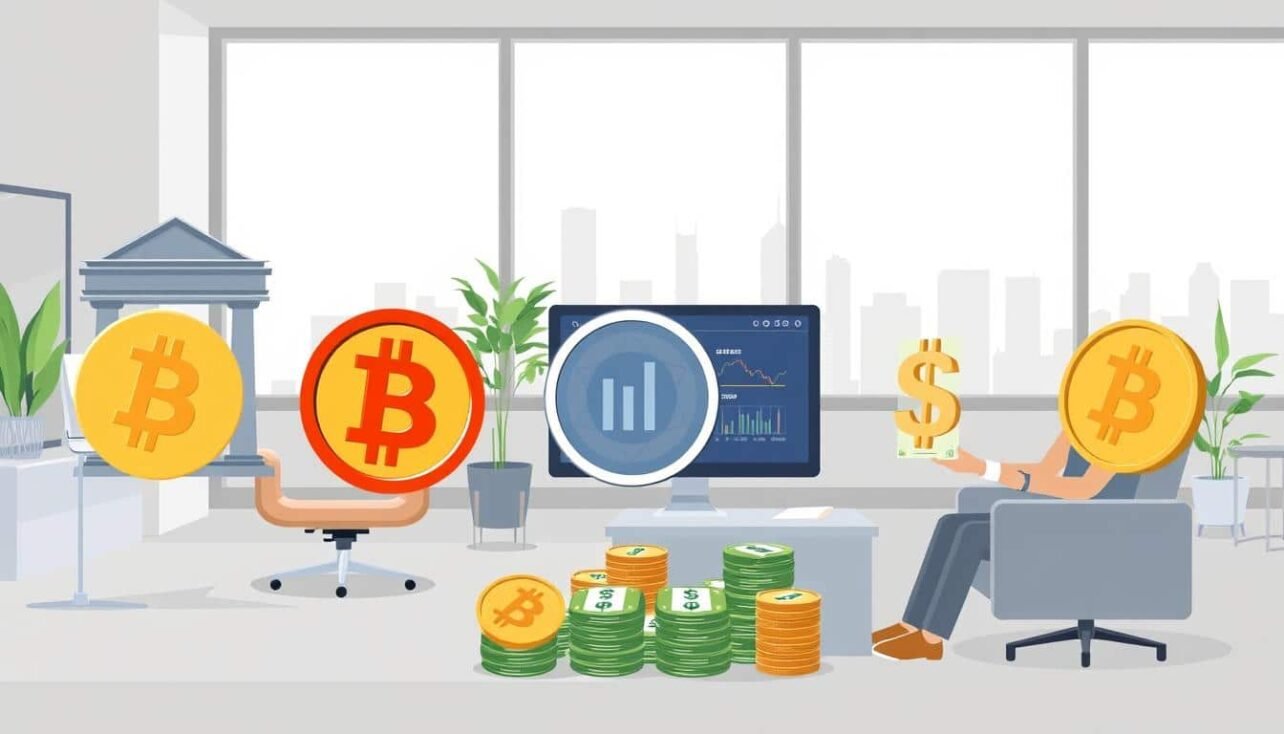As crypto adoption grows, many investors seek reliable ways to access their funds in USD. Liquidating digital assets requires careful planning to avoid unnecessary costs and delays. This guide explores practical solutions for transforming your holdings into spendable money while preserving value.
Multiple platforms now offer conversion services, each with unique benefits. Centralized exchanges provide speed for smaller transactions, while peer-to-peer networks may suit those prioritizing privacy. Crypto debit cards combine flexibility with instant access, and Bitcoin ATMs deliver physical cash within minutes.
Transaction fees vary significantly across services. Some charge flat rates, while others use dynamic pricing based on market conditions. Timing your conversion during high liquidity periods can improve exchange rates and reduce slippage costs.
Security remains critical when moving funds between wallets and bank accounts. Always verify platform credentials and enable two-factor authentication. Understanding tax implications ensures compliance with financial regulations during the liquidation process.
Key Takeaways
- Five primary conversion methods balance speed, cost, and privacy
- Fee structures differ across platforms – compare before transacting
- Market liquidity directly impacts final cash amounts received
- Security protocols protect assets during conversion processes
- Strategic timing can maximize returns on larger transactions
Understanding Crypto to Cash Conversion
While crypto thrives as a digital investment, converting it to traditional money unlocks real-world utility. This process bridges blockchain-based value with everyday financial needs, from paying bills to seizing time-sensitive opportunities.
What It Means to Liquidate Digital Assets
Liquidation turns virtual coins like Bitcoin into spendable currency. Platforms facilitate trades where digital assets become USD or other government-backed money. The transaction moves value from blockchain wallets to bank accounts or physical cash.
Benefits of Converting Crypto to Cash
Immediate access to funds tops the list of advantages. Essential costs like rent or medical bills often require traditional payment methods. Investors also secure gains during market peaks, protecting against sudden price drops.
Portfolio diversification becomes easier with partial liquidation. Balancing crypto holdings with stable assets reduces risk exposure. Emergency reserves grow through strategic conversions, ensuring readiness for unexpected expenses.
| Reason | Key Advantage | Common Use Case |
|---|---|---|
| Daily Expenses | Instant fund access | Utility bills, groceries |
| Market Peaks | Profit protection | Selling high-value assets |
| Risk Management | Portfolio balance | Mixing crypto with stocks |
| Major Purchases | Large transactions | Home down payments |
Key Considerations for Low-Fee Crypto Liquidation
Reducing costs requires understanding hidden fees in crypto liquidation processes. Every platform combines visible and hidden charges that affect final amounts received. Savvy users analyze multiple cost layers before initiating transactions.
Factors Influencing Transaction Costs
Platform selection creates the biggest fee variations. Centralized exchanges often advertise low trading rates but add withdrawal fees. Peer-to-peer services might charge escrow protection costs instead.
Market liquidity determines spread differences between buy/sell prices. Popular crypto pairs like BTC/USD typically offer tighter spreads. Less common assets may incur higher conversion losses.

Withdrawal methods impact total expenses. Bank transfers usually cost less than debit card transactions. Geographic location also matters – some regions face limited platform options with premium pricing.
Comparing Different Platforms and Services
Fee structures vary dramatically across conversion methods. Below shows typical costs for popular U.S. platforms:
| Platform Type | Trading Fees | Withdrawal Fees | Best For |
|---|---|---|---|
| Centralized Exchanges | 0.1%-0.5% | $5-$30 | Large transactions |
| P2P Markets | 1%-3% | Escrow fees | Privacy-focused users |
| Crypto Debit Cards | 2%-5% | None | Daily spending |
| Bitcoin ATMs | 7%-15% | None | Emergency cash |
Volume discounts apply on most exchanges for transactions over $10,000. Always calculate total costs – including currency conversion spreads – before confirming trades.
How to convert cryptocurrency to cash without paying high fees
Liquidating digital holdings demands careful evaluation of personal financial needs. Traders must weigh immediate cash requirements against potential savings from fee optimization. This balance determines whether premium-priced instant services or economical slower methods better serve individual circumstances.
Establishing Your Priorities: Speed vs. Cost
Centralized platforms often provide the lowest fees but require multiple verification steps. Users create accounts, link bank details, and transfer crypto to exchange wallets before initiating sales. Funds typically clear within 1-5 business days, making these services ideal for planned conversions rather than urgent cash needs.
Strategies for Minimizing Withdrawal and Exchange Fees
Platform selection dramatically impacts total costs. Compare trading fees across three key service types:
| Service Type | Average Fee | Processing Time |
|---|---|---|
| Standard Exchange | 0.1%-0.5% | 2-5 days |
| Instant Sell | 1.5%-3% | Minutes |
| Peer-to-Peer | 1%-4% | Hours |
Consolidate smaller crypto amounts before conversion to reduce per-transaction costs. Schedule trades during high market activity for better rates. Pre-verified accounts enable faster transactions when favorable conditions emerge.
Exploring Diverse Conversion Methods
Digital asset holders have multiple pathways to access traditional currency. Each option balances speed, privacy, and cost-effectiveness differently. Understanding these choices helps optimize value retention during liquidation.

Centralized Exchanges and Bank Deposits
Platforms like Binance and Coinbase dominate this space. Users create verified accounts, transfer crypto to exchange wallets, and sell for fiat currency. Bank transfers typically clear within 1-5 business days, making this ideal for planned conversions.
These exchanges offer high liquidity and customer support. However, identity verification and processing times may deter urgent transactions. Fees often range from 0.1% to 0.5% per trade.
Peer-to-Peer Platforms and OTC Trading
P2P services like LocalBitcoins remove intermediaries. Buyers and sellers negotiate terms directly with escrow protection. Payment options include bank transfers, digital wallets, or even cash meetups.
Over-the-counter (OTC) desks handle large transactions privately. This minimizes market price impacts for substantial holdings. Both methods require careful counterparty verification to prevent fraud.
Crypto Debit Cards and ATMs
Prepaid debit cards from providers like Crypto.com enable direct spending. Assets convert to fiat during purchases without separate liquidation steps.
Physical ATMs offer instant cash withdrawals. While convenient, fees reach 7-15% per transaction. Bitcoin ATMs require minimal verification but have strict daily limits.
Exchanges suit methodical planners, while P2P platforms reward negotiation skills. Debit cards simplify everyday spending, and ATMs address urgent cash needs. Each method serves distinct financial scenarios effectively.
Navigating Fees, Taxes, and Regulatory Requirements

Managing financial obligations during digital asset liquidation requires equal attention to costs and compliance. Two critical factors shape net proceeds: platform charges and government reporting requirements.
Understanding Transaction and Withdrawal Fees
Service providers layer fees differently. Centralized exchanges often combine trading commissions with withdrawal costs:
| Platform Type | Trading Fee | Withdrawal Fee |
|---|---|---|
| Standard Exchange | 0.1%-0.5% | $10-$25 |
| Instant Sell Service | 1.5%-3% | None |
| P2P Marketplace | 1%-4% | Escrow Fee |
Currency conversion spreads add hidden costs. Compare total expenses across multiple platforms before committing funds.
Tax Implications of Cashing Out Crypto
Every liquidation triggers a taxable event in most jurisdictions. Short-term holdings (under 1 year) face ordinary income rates. Long-term assets qualify for reduced capital gains taxes.
Three essential record-keeping practices:
- Track acquisition dates and prices
- Document sale amounts and fees
- Calculate net gains/losses per transaction
KYC regulations mandate identity verification for larger transactions. Prepare government ID and proof of address when using regulated services. Non-compliance risks account freezes or legal penalties.
Enhancing Security When Converting Crypto to Cash
Protecting digital assets during liquidation demands proactive measures against evolving cyber threats. Fraudsters often exploit conversion processes to intercept funds, making robust security protocols essential for preserving value.

Best Practices for Safe Transactions
Always verify platform licenses and user reviews before initiating transfers. Reputable services display regulatory certifications and maintain transparent fee structures. Enable two-factor authentication (2FA) across all accounts linked to crypto wallets or exchange profiles.
Consider these protective measures:
- Use hardware wallets like Ledger for offline storage of large holdings
- Conduct test transactions with small amounts first
- Bookmark official platform URLs to avoid phishing sites
Monitor transaction confirmations closely and never share private keys. Whitelist trusted withdrawal addresses to prevent unauthorized transfers. For peer-to-peer trades, insist on escrow services that hold funds until both parties confirm receipt.
Staying Compliant With KYC and AML Regulations
Legitimate platforms require identity verification to meet anti-money laundering standards. Prepare government-issued ID, proof of address, and sometimes selfie verification. These steps create audit trails that protect both users and service providers.
Key compliance factors:
- Report transactions exceeding $10,000 to IRS
- Maintain records of acquisition dates and sale prices
- Update personal information after legal name changes
Regulated exchanges often provide tax documents simplifying annual reporting. Non-compliance risks account suspension or legal penalties, making thorough documentation critical for hassle-free conversions.
Optimizing Your Cash Out Process
Streamlining digital asset conversion balances speed with value retention. Smart strategies help maintain more funds while ensuring timely access to liquidity. Prioritize methods aligning with your financial timeline and security preferences.
Tips for Quick, Convenient Conversions
Consolidate smaller holdings into single transactions to minimize per-trade fees. Services like Coinme simplify Bitcoin-to-cash transfers through user-friendly interfaces and clear pricing. Pre-verify accounts on trusted platforms to accelerate urgent transactions.
Debit cards linked to crypto wallets provide instant spending power without full liquidation. Time conversions during peak market hours for better rates. Explore crypto payment gateways for flexible withdrawal options with competitive fees.
Regularly compare platform rates and hidden costs. Bookmark fee calculators for real-time comparisons. These steps create efficient cash access while preserving your digital wealth’s value.


No comments yet